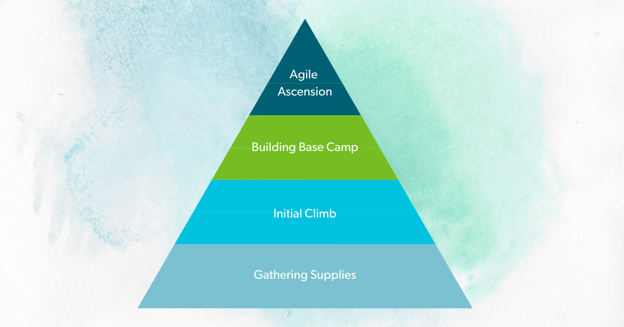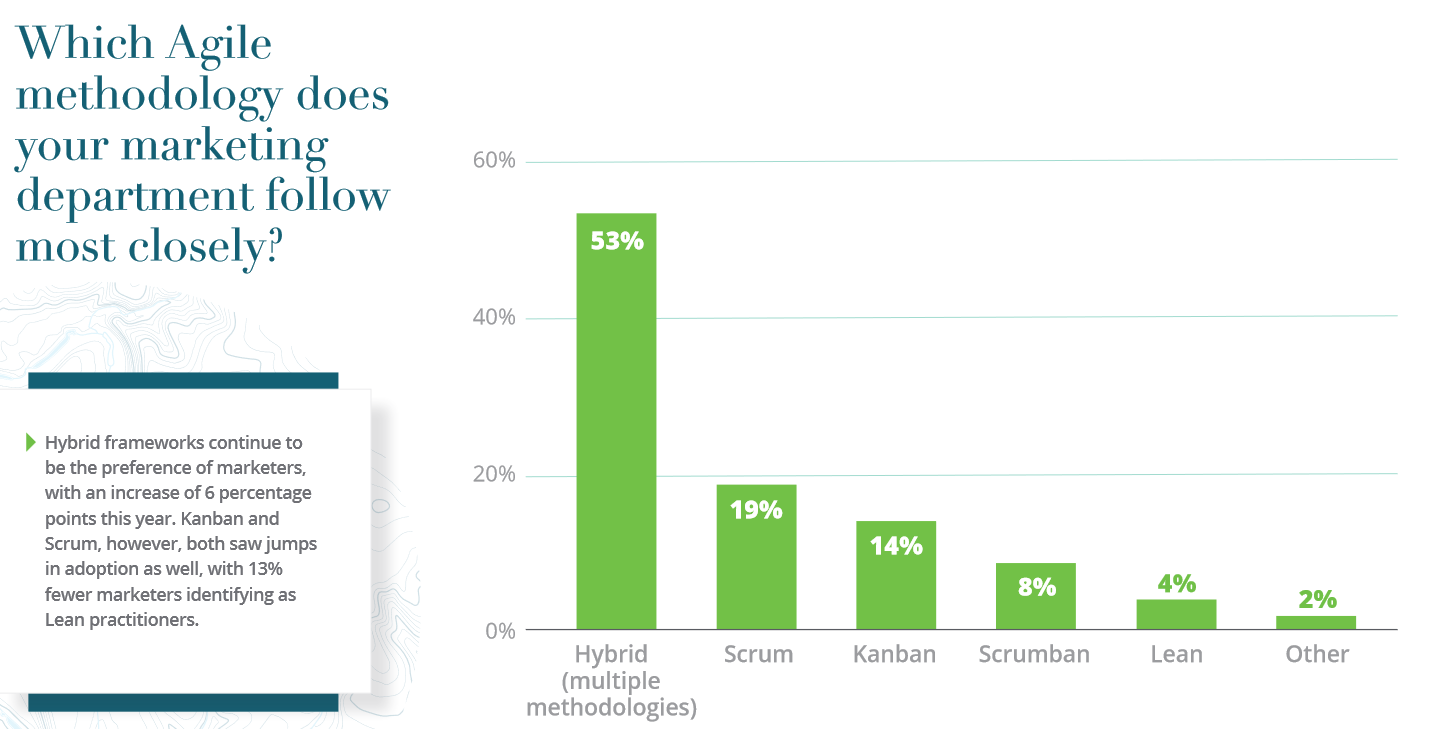-
- marketing agility
- Teams
- Organizations
- Education
- enterprise
- Articles
- Individuals
- Transformation
- Solution
- Leadership
- Getting Started
- business agility
- agile management
- going agile
- Frameworks
- agile mindset
- Agile Marketing Tools
- agile marketing journey
- organizational alignment
- Agile Marketers
- People
- Selection
- (Featured Posts)
- strategy
- agile journey
- Metrics and Data
- Kanban
- Resources
- Why Agile Marketing
- agile project management
- self-managing team
- Meetings
- Scrum
- agile adoption
- scaled agile marketing
- tactics
- scaled agile
- AI
- Agile Meetings
- agile marketing training
- agile takeaways
- Agile Leadership
- agile coach
- enterprise marketing agility
- Scrumban
- state of agile marketing
- team empowerment
- Intermediate
- agile marketing mindset
- agile marketing planning
- agile plan
- Individual
- Team
- Videos
- agile marketing
- kanban board
- Agile Marketing Terms
- agile transformation
- traditional marketing
- FAQ
- agile teams
- Agile Marketing Glossary
- CoE
- Scrumban
- agile
- agile marketer
- agile marketing case study
- agile marketing coaching
- agile marketing leaders
- agile marketing methodologies
- agile marketing metrics
- agile pilot
- agile sales
- agile team
- agile work breakdown
- cycle time
- employee satisfaction
- marketing value stream
- marketing-analytics
- remote teams
- sprints
- throughput
- work breakdown structure
- News
- agile brand
- agile marketing books
- agile marketing pilot
- agile marketing transformation
- agile review process
- agile team charter
- cost of delay
- hybrid framework
- pdca
- remote working
- scrum master
- stable agile teams
- stand ups
- startups
- team charter
- team morale
- user story
- value stream mapping
- visual workflow

When Edmund Hillary and Tenzing Norgay first climbed Mount Everest together, they were careful to document their ascent to the formidable summit to prepare future climbers for the same journey.
They tracked data about temperatures at different altitudes, how their resources were reacting to the environment, which tools were appropriate in which terrain, safety hazards along the way, and much more.
Since 1953, technology has changed significantly, resources are much more widely available and, as a result, more and more people go on the trek every year.
Despite these advancements, new climbers are still applying aspects of the original reference model from Hillary and Tenzing; their learnings are still getting passed down through generations of mountaineers.
The ascent towards the summit of true, full-fledged marketing agility is similarly complex, convoluted, and challenging, even for the most motivated organizations.
But, just as Hillary and Tenzing carefully documented their climb to help those who came after, Agile teams can forge a trail for those who come after them. Also known as a reference model, this document is critical for starting strong and going the distance.
Where Agile Reference Models Fit
Like climbing Everest, the journey to becoming fully Agile is made up of a number of key stages, each with its own set of watch-outs and hacks.
Working with a variety of different clients over the years has helped us identify four distinct stages on the way to the top. In the AgileSherpas Marketing Agility Ascension, these stages are described as:

- Stage 1: Gathering Supplies
Preparing for the Agile transformation by identifying key metrics, preparing your first pilot teams, and drafting a roll out as well as a communication plan.
- Stage 2: Initial Climb
Requires the organization to conduct Agile marketing pilots with 1-3 pilot teams and form a trial strategy team as a way of stress testing Agile practices and frameworks in their own context. In the process, establishing good prioritization habits for leaders and execution tactics for the team is key.
- Stage 3: Building Base Camp
The primary deliverable of this stage is the first iteration of a Reference Model based on the learnings from the pilot teams and coaching efforts. This model is the foundation on which future Agile teams will build their processes, allowing them to benefit from the pilot’s learnings immediately.
- Stage 4: Agile Ascension
Once the path is clear, complete department-wide transformation is undertaken. In this final stage of transformation from base to summit, the organization focuses on training internal champions to embed agility and compare pre vs post Agile performance.
Our Sherpas have discovered that without the Reference Model described in Stage 3 of the ascension, future Agile teams beyond the pilot tend to have a diminished chance of success.
If the inaugural Agile marketing pilot teams don't take the time to meticulously document their discoveries, they keep all of their valuable learnings to themselves. Further, if they document their learnings, but don’t socialize them with the rest of the department, every future team starts their individual journey to agility from scratch, falling prey to avoidable mistakes.
Crafting an effective reference model for new Agile teams that will be spinning up in the department is one of the surefire ways to set every team up for success.
But how do you build a reference model that really works? What should it contain? How can you socialize it?
Let us walk through the process of putting it together.
Before before jumping into that, why don't you take a second to get our guide on choosing an Agile trailhead?
An Effective Agile Reference Model Template
Every reference model for future Agile teams will have its own nuances, because there's variety in all organizational Agile implementations. However, every effective reference model has several key characteristics in common.
They all address and answer the following questions about the context in which a particular team adopted Agile:
- What is the ideal Agile team size for our organization?
- What are the preferred Agile framework(s) inside our organization?
- Do functional or cross-functional teams operate more effectively in our context?
- What are the key Agile team meetings we need to begin including in our calendars? How often should they occur for best results?
- Are any inter-team meetings required? What kinds? When?
- Which Agile leadership roles are crucial to our teams? Which roles must we identify?
- How is the team workflow visualized? Are there any best practices that we want to continue implementing for workflow stages? Which Agile tool should we use?
- What additional resources do we have access to as we get up to speed?
- Who should we contact with questions about applying Agile in our daily work?
As the pilot team works through their implementation, they chronicle their findings in the reference model and set the precedent for future teams inside the organization. For easy dissemination, most reference models are made available in the organizational Sharepoint or wiki as a document or presentation.
Elements of a Winning Reference Model
If your Reference Model had a Table of Contents, it would likely contain the following five sections: Frameworks of Choice, Teams & Leaders, Meetings, Workflow Visualization and Resources.
.png?width=619&name=Elements%20of%20a%20Winning%20Reference%20Model%20(1).png)
Frameworks of Choice
Many of the first questions you'll receive from fellow marketers at the start of the Agile journey will likely relate to the Agile framework that the pilot team settled on after testing the Agile approach. Content comparing Kanban and Scrum is abundant on the web, but make sure to cover this topic in your Reference Model first, to keep it grounded in your organizational context.
In this section, make sure you discuss the pros and cons that the pilot team identified in each framework. Covering their impressions about both ensures that anyone reading can follow the pilot team’s journey navigating different Agile frameworks before arriving at the best fit for their needs.
Hybrid Agile frameworks, like Scrumban, are by far the most popular approach to adopting Agile for marketers. Your pilot team’s version of a hybrid framework will combine practices from pure Scrum as well as practices from pure Kanban in a mix.

Be sure to include a description of the practices your pilot team ultimately chose to apply, and why they were effective in addressing their process challenges.
Teams & Leaders
In an Agile context, team members are likely to operate in a new, cross-functional structure and team leaders will have new responsibilities related to prioritization and process management.
To clarify the new relationships, begin by identifying the learnings related to the recommended average size of Agile team inside your department.
Why did a certain number of team members turn out to be too big?
Is there a minimum number of team members?
Address these potential questions in this section.
Going on to define whether some teams benefited from remaining functional as well as the effects of moving to cross-functionality will also help future teams understand this new team dynamic to make better decisions about their own.
As the traditional marketing team leader role will shift significantly during the move to Agile, dedicating an area of the reference model to discuss the new responsibilities will be crucial.
Most often, team leaders will need to take on the dual Marketing Owner and Scrum Master role in order to help their Agile marketing teams navigate effectively. Provide some tips that earlier teams found helpful for how to make that happen for new Agile leaders.
Meetings
Agile meetings are almost always a topic of contention among marketing teams new to Agile. Notoriously, marketers sitting on several project teams at once are usually the members of the organization that are in the most meetings.
In fact, they are in so many different meetings that they feel like they don’t have time to actually execute on the work items they’ve committed!
When they initially begin learning about the feedback loops embedded in Agile ways of working in the form of meetings they are, to say the least, displeased. To them, it might sound like an added layer of meetings on top of their already busy schedules.
It’s up to the pilot team’s reference model to identify the most important Agile meetings, effective versions of their agendas as well as suggestions for length and frequency.
If need be, it will also be up to the pilot team’s Agile impressions to change the common misconception that Agile meetings are scheduled on top of existing meetings when, in fact, they’re meant to replace many of them.
Reference model content about Agile meetings should also include any touch points across teams that helped the pilot connect with stakeholders and establish channels of regular communication with the adjacent teams with which they collaborated.
Workflow Visualization
Every team’s workflow visualization likely will and should be unique to their process. Providing suggestions for workflow visualization won’t dictate the exact setup of future teams, but can provide an excellent starting point, examples of opportunities and templates to their advantage.
Screenshots of tried and tested Kanban boards from the pilot team and descriptions of each of their process phases can help a new Agile team understand when to apply the same strategy.
Digital Kanban boards will also serve as a point of reference when future Agile teams set up their own workflows in the organization’s process management software tool of choice.
If digital boards are where teams will be breaking down and tracking their work items, tutorials about the software in which they’re built and cheat sheets from the pilot team can help new teams overcome the learning curve and get onboarded more quickly.
Resources
Knowing where to turn for extra support can make the difference between a new team ramping up or failing to do so.
Links to extra online articles from trusted sources as well as recommendations for virtual training courses will help the team create shared understanding of Agile mindset and practices. Instead of scouring the web for legitimate information, the pilot team can set up an Agile wiki for future teams to access if they want to catch up with definitions or see more examples of Agile practices at work.
In addition, a comprehensive list of names, roles and contact details for Agile champions or experts within the organization can be an indispensable resource for new team members who are seeking support internally.
Ramp Up Quickly With a Comprehensive Reference Model
Starting small, testing smart and growing fast is a winning model for marketing departments that want to take a methodical approach to scaling their Agile implementations. Agile marketing pilot teams have a significant role to play in this process by forging the path ahead.
However, without the proper documentation, the pilot team’s precious learnings are in danger of getting lost in the ether.
To help future teams hit the ground running with Agile and avoid repeating the same mistakes as their predecessors, a detailed, comprehensive reference model for applying Agile inside the organization is vital.
If your department is planning to experiment with Agile practices through a pilot group or you’re currently in the midst of an Agile marketing pilot, a reference model that includes best practices will make all the difference if it contains the right elements. Focus on frameworks, the roles of teams and leaders, meetings, workflow visualization and resources and you’ll be providing an excellent starting point for all of your future Agile teams.
Before moving on, don't forget to get your copy of our Choosing an Agile Trailhead Guide.
Topics discussed
Improve your Marketing Ops every week
Subscribe to our blog to get insights sent directly to your inbox.





.png?width=450&height=250&name=Senior%20Agile%20Coaches%20Share%20How%20Newbies%20Can%20Maintain%20Agility%20(3).png)